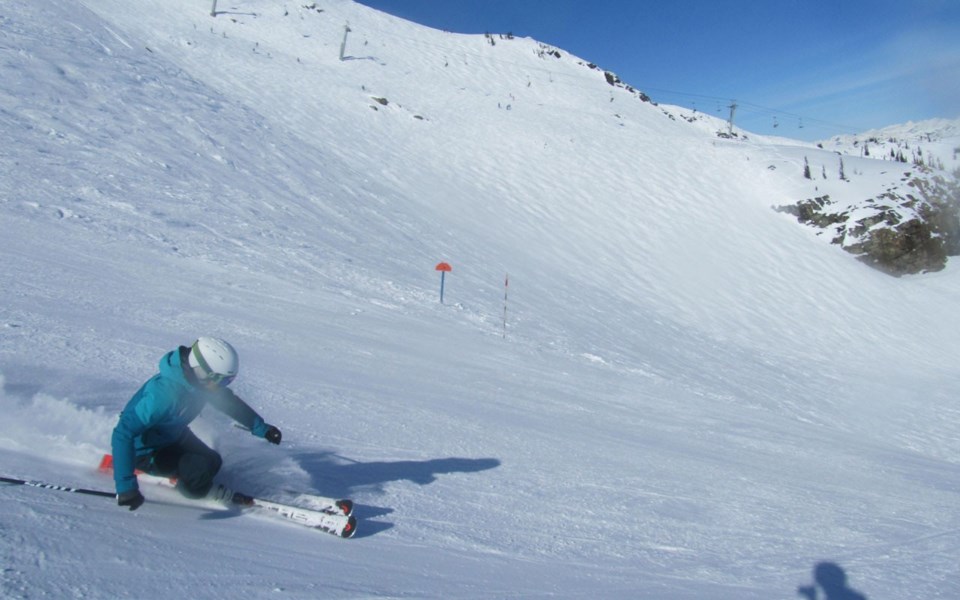We know that skiers and boarders are not arriving on the mountains in proportion to population growth.
And we know that different generations are enjoying the mountains at varying rates, with the group spending the most time and the most money being at the upper end of the age groupings—65 or older.
Those 17 and under enjoy the mountain sports too, but they are also dropping out at high levels.
"The participation by Canadians in skiing shows a gradual, but steady, decline over the past 9 years," states the most recent Facts and Stats report from the Canadian Ski Council.
"5.2% (1.9M active skiers/riders) of the Canadian population were actively skiing in 2016/17. This can be compared with a high of 6.9% just a few years ago. At the same time, our skiers are visiting resorts fewer times per annum. Just 7.0 ski days per person, on average, were recorded in 2016/17."
Obviously, conditions have a great deal to do with skier/boarder days on the mountains, and we saw that reflected in Vail Resorts' midseason report earlier this month, which saw the ski-resort giant trim its full-year earnings guidance after a slow start at Whistler Blackcomb (WB)due to poor snow when the mountains opened and into early December.
But despite all the statistical knowledge available, the one thing that comes up over and over when it comes to falling or plateauing skier/boarder numbers is the price of participation.
If you walk up to a WB ticket window right now, a day ticket will set you back $169. When Whistler Mountain opened in 1966, it was $5. (Of course, hardly any one goes up to the ticket window to buy a ticket, as there is always some sort of deal to be found online in advance.)
Let's be very honest here, though: The experience today on both mountains is nothing like it was back in those early, opening days—and making the mountains what they are today was not cheap.
Added to this is the reality that operating a ski mountain cannot be automated, so labour costs are always going to be significant, as are capital and equipment replacement costs.
Still, if the ticket increase was guided only by inflation, a lift ticket would be $38.75 in today's dollars.
When Vail Resorts bought WB for $1.4 billion, day tickets were sitting at about $129. In the 2017-18 season, they were at $156.
So we are left asking ourselves: Have costs increased so much that is justifies this significant jump in ticket prices year over year? Realistically, probably not. What has increased is the perception by ski companies that the market can bear the increases, and the desire by those keeping the profits to make money.
One wonders when the tipping point will come in this equation?
It is absolutely true that there are many families, kids, and singles living here who cannot afford to ski. Perhaps it's only my perception, but it feels like that number is growing.
Of concern to me is that fewer and fewer youths are skiing. Of course, the ski industry has programs to encourage kids to learn to ski, but once they hit the late teens and head out on their own, most can't afford a pass or a ticket or even to live here.
Consider that, according to the Canadian Ski Council, ski and snowboard participants generally come from upper income families ($101,175 average household income) and that the majority of skiers' and snowboarders' main motivation for skiing and snowboarding is to do "Something together as a family."
Statistics can be challenging as there are so many ways to interpret them, but here are a few others by way of context over the years.
Total skier visits to B.C. in 1996-97 were 4.5 million. Today that number sits around 6.6 million. It's estimated that there are about 280,000 skiers in Vancouver—and another 97,000 snowboarders.
Gross revenue per skier day has also increased over the years, not surprisingly. In 1996-97 (tickets were $37), it was $44.63, which was up from $39.29 in 1993-94 (tickets were $34), and $33.83 per skier day in 1990-91. By 2013, that was up to $95.59; in 2016, it was $122.59.
Vail Resorts does not share this type of specific information (that I could find), presumably out of concerns about how it might affect their market performance.
It's been long recognized that this is an expensive sport, but as we look to a future with climate change, the ever-present hiccups of the global economy and the oft-fickle nature of the tourist, I would argue that the price point needs to be a much larger consideration if we hope to have generations of skier and riders on slopes into their senior years.




